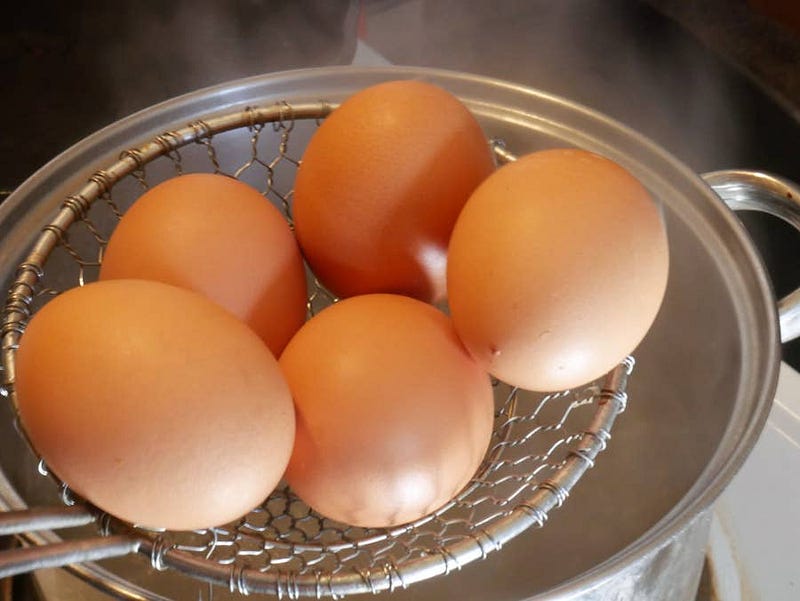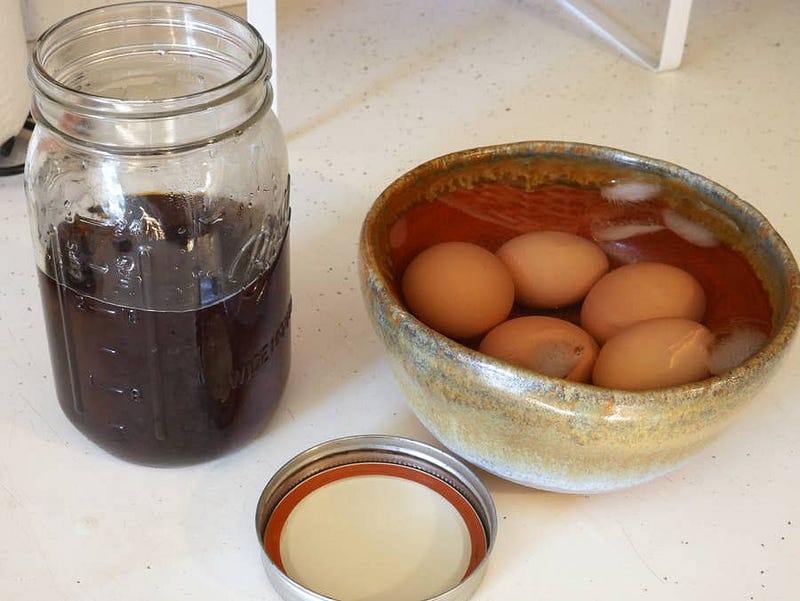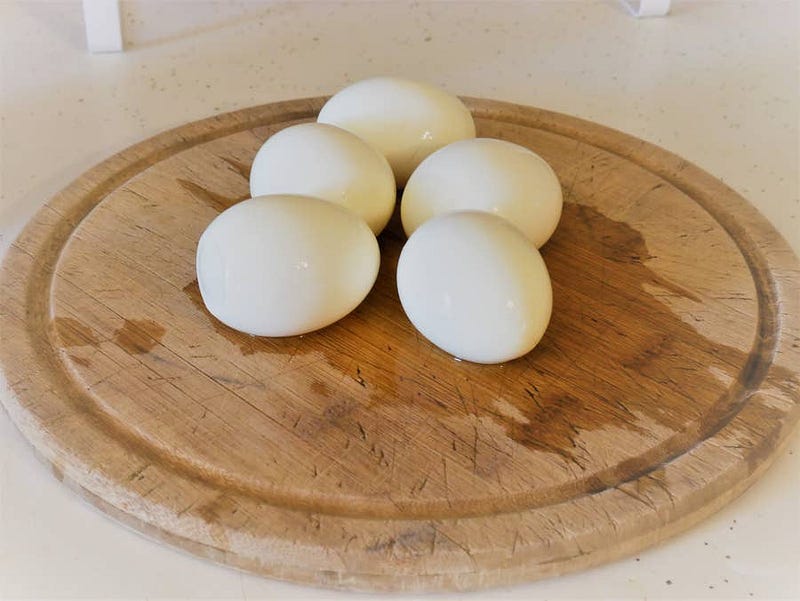The Perfect Ten-Step Ramen Egg!
There’s more to this egg than meets the eye.

If there’s any single accompaniment that I absolutely cannot do without when making ramen at home, it’s the egg. Toppings make ramen a personalized meal, something that can take on the unique identity of the person who orders it. Those deliciously chewy wheat noodles, now nearly ubiquitous with Japan, are more than capable of standing alone in a well-flavored broth, it’s true, but toppings…oh, those toppings.
When cooked just right, the perfect ramen egg melds with the meal, elevating the whole bowl to a different dimension of sensory bliss.
For me, it’s the golden custard creaminess of the egg that adds a special sort of magic to the dish. When cooked just right, the perfect ramen egg melds with the meal, elevating the whole bowl to a different dimension of sensory bliss. Have I caught your attention? How to make a ramen egg? Alright, let’s dive on in.
There are two types of ramen eggs that people are usually familiar with. One is just a soft-boiled egg served on the top, while the other is true ajitsuke tamago — a flavored egg that’s been marinated for several hours. This recipe can be used for either variety, depending on how quickly you need that custardy egg floating in your bowl.
Prepare workspace and get all your items ready!

It makes everything go smoother during any recipe if you prepare everything you need beforehand.
Bring water to a boil

Add one teaspoon of baking soda or salt to a pot of water and bring to a rolling boil. (This will help the shell detach from the inner egg and make it easier to remove later). Then reduce to a low boil.
Add the eggs to the pot

Ramen eggs are all about delicate timing.
- Using a slotted spoon, mesh strainer, or frying ladle, place the eggs into the gently boiling water.
- Cook for between 6 and 6 1/2 minutes.
Anything under that will result in a runny egg, and going beyond the 7-minute mark will run the risk of an egg that’s too hard. Remember, the egg will keep cooking inside its shell even after you’ve removed it from the hot water, which brings us to the next and crucial step.
While the eggs cook, prepare a resting bowl

After you remove the eggs from the boiling water, you’ll need to cool them quickly. Fill a bowl with cold water and, if you have them available, several ice cubes. If you don’t have ice available, just fill the bowl with cool water, and you can then run a cold tap over the eggs in the bowl to keep their surrounding bath cool.
Remove the eggs from the stove

Using your slotted spoon or similar utensil, remove the eggs quickly from the boiling water and place them into the cold water. Either use ice to chill them quickly or run a cold tap over them for two minutes or so, until they’re cool to the touch.
You want to keep them from cooking any longer and avoid completely cooked hard-boiled eggs.
Peel your eggs!

Peeling is a part that can go so wrong for so many. If you used baking soda in the boiling water, this step will be a little easier, but don’t get complaisant! You do not want to prematurely rip the egg.
- Tap the egg gently on a hard surface, like a cutting board, so that the shell breaks in several places.
- Once the shell is broken all over, carefully pinch and tear it away bit by bit.
You can do this while running it under a cool tap if you want, the running water will flush the shell and make it a little easier to remove.
Either serve or marinate!

Now comes the moment of truth. Do you serve right away, or do you marinate? If you have got at least four hours, I strongly recommend marinating your eggs (but don’t try this if you have less time. The best marination length is 6–8 hours for perfect ramen eggs, so 4-hour marination is already quite short).
If you choose to serve immediately, place all your other ingredients into your bowl first, except the broth. Then cut the egg in half with a sharp knife and immediately transfer to the top of your noodles. Gently pour the broth around the egg so that it is surrounded by steaming hot liquid. Add final garnish or seasoning and serve!
If, however, you want your taste buds to totally flip out, have some patience and follow on to the next step.
While your eggs cool, prepare the marinade
Add the following mixture to a seal-able container:
- 1 cup of water
- 1/4 cup soy sauce or tamari
- 1/4 cup mirin (sweet cooking sake)
- 1 tbsp. Rice vinegar (if you want a stronger pickled flavor, you can use two tbsp.)
- Mix.
You want enough of the mixture to cover the eggs at least halfway, though if you have a tall container, use that, and cover them completely.
Wait, turn the eggs, wait some more

Now you wait. Place the eggs in the fridge and let the marinade do its holy work. If the eggs are not quite covered, turn them every couple of hours to get equal time in the flavor bath.
Serve and prosper!

Once at least 4 hours (but preferably 6–8) have passed, your eggs will be ready! Cut in half quickly with a sharp knife and place on the top of your ramen noodles. Pour broth gently around the noodles and egg, and serve with any final garnishes.
And that’s it! The perfect bowl of ramen, ready to rock your world.
